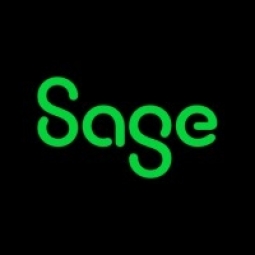Download PDF
Kasco Greases Wheels of Sales Force With Sage 100 ERP
Technology Category
- Functional Applications - Enterprise Resource Planning Systems (ERP)
- Functional Applications - Remote Monitoring & Control Systems
Applicable Industries
- Automotive
- Retail
Applicable Functions
- Sales & Marketing
- Business Operation
Use Cases
- Supply Chain Visibility
- Inventory Management
Services
- System Integration
- Software Design & Engineering Services
The Challenge
Kasco, a distributor of BG Products, wanted to automate its sales force, which was 20 strong. When salesmen visit customers, nine times out of ten they have the required products in their van. It makes sense, therefore, to deliver an invoice at the point of sale—to avoid duplicate data entry at the head office and speed up the revenue stream. For ten years the company had been happy using Sage 50—U.S. Edition as its business software. But it needed an application that would integrate with the Route Management System (RMS) on its salesmen’s hand-held computers. Other BG distributors used an interface between Sage 100 ERP* and the RMS designed by Quality Data Products, a Sage licensed developer.
About The Customer
Kasco is a distributor of BG Products, a manufacturer and worldwide distributor of specialty lubricants, greases, chemicals, and service equipment. BG products are sold through a network of independent distributors, each with an exclusive marketing area. Kasco's territory is comprised of Maryland, Virginia, and Washington D.C. The company sells fuel and transmission additives and equipment such as transmission flush machines to gas stations and private repair shops. Another key market is dealerships’ service departments. The company advertises widely on both television and radio, and its products are endorsed by the local auto maintenance guru. Kasco is based in Temple Hills, Maryland and has 35 employees.
The Solution
Kasco implemented the interface, migrated to Sage 100 ERP, and now has an end-to-end system with complete accounting, inventory management, and field sales reporting capabilities. Salesmen generate invoices using a printer in their vans and present them to the customer. They download the information to headquarters using a modem or phone line, either on-site or from their home at night. This has eliminated the need for an accounts receivable clerk doing data entry of sales tickets. Salesmen can pull up customer data on a daily basis. When they visit an account, they know the credit status without having to place a call to the head office, and they can give friendly reminders about payment and avoid further transactions with delinquent accounts when necessary.
Operational Impact
Quantitative Benefit
Related Case Studies.

Case Study
Integral Plant Maintenance
Mercedes-Benz and his partner GAZ chose Siemens to be its maintenance partner at a new engine plant in Yaroslavl, Russia. The new plant offers a capacity to manufacture diesel engines for the Russian market, for locally produced Sprinter Classic. In addition to engines for the local market, the Yaroslavl plant will also produce spare parts. Mercedes-Benz Russia and his partner needed a service partner in order to ensure the operation of these lines in a maintenance partnership arrangement. The challenges included coordinating the entire maintenance management operation, in particular inspections, corrective and predictive maintenance activities, and the optimizing spare parts management. Siemens developed a customized maintenance solution that includes all electronic and mechanical maintenance activities (Integral Plant Maintenance).

Case Study
Improving Production Line Efficiency with Ethernet Micro RTU Controller
Moxa was asked to provide a connectivity solution for one of the world's leading cosmetics companies. This multinational corporation, with retail presence in 130 countries, 23 global braches, and over 66,000 employees, sought to improve the efficiency of their production process by migrating from manual monitoring to an automatic productivity monitoring system. The production line was being monitored by ABB Real-TPI, a factory information system that offers data collection and analysis to improve plant efficiency. Due to software limitations, the customer needed an OPC server and a corresponding I/O solution to collect data from additional sensor devices for the Real-TPI system. The goal is to enable the factory information system to more thoroughly collect data from every corner of the production line. This will improve its ability to measure Overall Equipment Effectiveness (OEE) and translate into increased production efficiencies. System Requirements • Instant status updates while still consuming minimal bandwidth to relieve strain on limited factory networks • Interoperable with ABB Real-TPI • Small form factor appropriate for deployment where space is scarce • Remote software management and configuration to simplify operations









